A time-honored choice for countertops, marble is a classic that’s versatile enough to look good in all sorts of kitchens. That said, it’s not without its downsides: Susceptible to staining, scratching, and etching, marble is a natural product that develops a patina with use. Some people like a surface that reflects their cooking history, others don’t. Read on to determine if this high-maintenance beauty is the material for you.
Above: London designer Charles Mellersh paired honed marble with brass trimmings in a Notting Hill Kitchen. “Marble adds character and an inherent charm that helps ground a modern kitchen,” says Mellersh. Are there circumstances when he advises against marble? “Don’t use it in a kitchen where spills can’t be cleaned up quickly,” he warns. Photograph courtesy of Charles Mellersh.
Exactly what is marble?
Marble is a metamorphic stone found in mountainous regions of North America, South America, Asia, and Europe—from Colorado to Brazil and Italy. It’s created by the physical or chemical alteration of sediment into a denser form through heat and/or pressure. The resulting rock has a crystalline nature enabling it to take a polish. It also has veins of mineral deposits that pattern it, no two slabs are exactly alike.
Marble is one of the more porous of the metamorphic stones, which is why it’s prone to staining. While not as hard as its metamorphic cousin granite (which comes from deeper in the earth where it’s exposed to more heat), marble is not as soft as soapstone. It generally has a low abrasion rating, meaning it scratches quite easily. The stone’s chemical makeup (calcium carbonate) makes it particularly sensitive to acidic solutions, which can result in etching on the surface (see below to learn to manage this). On the plus side, marble is heat resistant, strong, and generally doesn’t chip or dent.
Above: A selection of white marble slabs at Stone Source. Clockwise from top left: Bianco Oro, Calacatta Vision, Imperial Danby, and Bianco Dolomiti.
What colors can marble be found in?
One of the attractions of marble is that it’s available in a wide variety of natural colorations. Marble comes in hues of white, black, gray, yellow, green, and pink, some with dark, prominent veins and others with more subtle patterning. Architect Elizabeth Roberts points out that the irregular lines of veining can be a nice contrast to the straight lines inherent in kitchens.
Despite the variety of colors available, white marble is generally the first choice for use as kitchen countertops. Like a white button-down shirt, white marble is adaptable, mixing well with different styles and a wide variety of materials (stainless, wood, tile). It can be dressed up with a polished finish, or made more casual with a honed finish. Another benefit is that etching is less visible on white marble than on dark. Worried about white? Stone Source offers useful Insights on White Marble.
Above: Elizabeth Roberts designed a kitchen to feature a slab of pink-hued marble. “My client mentioned early during the design phase that she loved pink marble. When I saw the slab at a stone yard, I knew it was perfect for her,” says Roberts. “I don’t know the name of the marble, and I’ve never seen it since,” she adds—a reminder that stones are one of a kind, especially those with unusual hues or patterns. Photograph courtesy of Elizabeth Roberts Design.
For a tour of Elizabeth Roberts own house, see House Call: Elizabeth Roberts in Brooklyn, and go to pages 76-91 of the Remodelista book to learn Roberts’s tricks for creating a clean look on a budget.
Above: A white Calacatta marble countertop in the kitchen of a Remodeled Oakland Bungalow by architect Ian Read of Medium Plenty in San Francisco. Why white? “We know people’s tastes can change over time, and we like to make the fixed elements, such as countertops, look timeless. This allows clients to change the feel of the room with accessories, paint, flowers, and linens—and without having to remodel again,” says Read. “In addition to Carrara and Calacatta, we also love Yule marble from Colorado, a great solid white (think Lincoln Memorial).” Photograph courtesy of Medium Plenty.
What kinds of marble finishes are available?
The most common finishes are polished, honed, and leather (also known as antique). Finish affects the look and performance of marble countertops; here’s what to know about each.
- Honed (or matte) finish: Created by sanding the marble so that is has a satiny-smooth, almost soft feel, a honed surface doesn’t show as many scratches and flaws as a polished finish, and it also mutes the color of the stone. Warning: Honing the surface opens the pores of the marble, making it more susceptible to staining.
- Polished finish: A grinding and buffing process results in a high-gloss slick surface, favored for bringing out the details of the marble’s color, veining, and character. While polished marble is the least porous of the finishes, it’s the most susceptible to getting etched by household acids and cleaners.
- Leather finish: This option is created by adding a leather-like texture to a honed surface. It has a soft sheen, but is not reflective like a polished finish, and is most commonly used with dark marbles. The texturing is an effective concealer of fingerprints and other imperfections. Note that the amount of texture created in the process varies from stone to stone.
Above: Gast Architects combined a marble countertop with a wood-paneled backsplash in this San Francisco kitchen. “We often use a honed finish for its softer, more informal finish,” says David Gast. His tip: “Don’t use marble as a backsplash behind a range or cooktop.” Michelle wishes she had heard this advice: Read My Dirty Secret, or How I Learned to Live with a Marble Backsplash.
Above: A slab of black and gray Arabascato Grigio marble at Fox Marble in San Francisco.
Does marble need to be sealed?
In a word: yes. Because of its porous nature and vulnerability to acids, sealing marble used for countertops is a must. Perfectionists take note: Even with a sealer, the stone will absorb stains over time and develop a patina (which many people like). There are two types of sealants: topical and penetrating.
- Topical sealant: A surface coating that covers the stone, it can slightly alter the look of the marble but provides some protection against acid etching. The downside: topical sealants are likely to wear off over time and can scorch from heat, and be rendered less effective by scratches.
- Penetrating sealant: True to its name, this sealer seeps into the pores of the marble and is the option most stone suppliers recommend for kitchen counters. Penetrating sealants help limit stains by keeping liquids (oil, wine, coffee) from soaking into the surface. They do add a level of water and stain resistance (buying you time to clean away stain-causing materials) but don’t make the surface waterproof. Penetrating stone sealants also don’t protect against damage from acidic liquids.
Be advised: Even penetrating sealants will degrade over time and should be reapplied periodically. Some suggest once a year, or more often if needed. How to tell if reapplication is required? If water beads on the countertop, the sealant is still working; if it soaks right in, it’s time for a refresher. Consult with the marble fabricator about the recommended sealant for your marble to ensure that it’s nontoxic, food-safe, and the best sealer for your particular stone.
Above: LA designer and blogger Sarah Sherman Samuel of Smitten Studio splurged on marble in her budget-conscious kitchen remodel. She selected the slabs at an LA marble yard and expected to go for Carrara but discovered “Carrara is generally more gray with smaller veins, and Calacatta is whiter with more dramatic veins. The slab I found was very white and the veins have the prettiest range of colors, including touches of gold and green.” Take a full tour of her SemiHandmade Kitchen with Ikea Cabinets.
What is the best way to clean and care for marble countertops?
Some simple steps can keep your marble beautifully maintained (but expect a natural patina to develop).
- Wipe up spills when they happen, limiting the time they have to seep into your countertop.
- For cleaning, “the old rule of thumb is never use anything you wouldn’t use on your hands,”, advises Pietra Fina. This means avoiding powdered cleansers, tub and tile cleaners, abrasive pads, or even general “all-purpose” cleansers that may contain acidic ingredients.
- Mild liquid dishwashing detergent or a similar mild soap and warm water with a non-abrasive towel or sponge are the best for day-to-day cleaning.
- Use a neutral stone cleaner for tougher cleanups.
- Protect the surface by using cutting boards for food preparation.
- Reseal the countertop annually, or more often if needed (see above).
Above: Carrara marble countertops and backsplash in British chef Skye Gyngell’s London kitchen designed with British Standard cabinets. Photograph by Alexis Hamilton for British Standard.
How do I shop for marble countertops?
Buying marble can be a time-consuming and complicated process. Advance preparation and research are key. Before starting the selection process, consider getting help from a fabrication professional and working closely with your contractor. Some additional tips:
Know your size specifications. Marble is purchased in slabs that are already finished and cut to a certain thickness. Most slabs are 0.75- to 1.25-inches thick, though thicker cuts are available. That said, those wanting an extra-wide counter are often advised to laminate the edge of the slab with a piece of marble to achieve the thick look (while keeping the cost and weight under control).
Do your research. There are a lot of choices; entering the warehouse with an idea of the color and the amount of patterning you’re after will make the process faster and more focused. Understand, however, that marble is a natural product and can’t be ordered to exact color and patterning specs.
Give yourself plenty of time to take in all the local options. Unless you’re willing to buy sight unseen (not recommended), or drive considerable distances, marble purchases are limited to what’s on hand at your local stone supplier’s warehouse.
Pricing is not transparent, so ask the salesperson how the pricing works. This is not the grocery aisle; slabs are not affixed with price tags. Many suppliers have price bands that will help you narrow your search; final pricing is typically worked out via your fabricator working with the supplier.
How much does marble cost?
Marble is not a budget countertop material. The price range is high and wide, usually falling between $125 to $250 per square foot, with some variance at both ends of the spectrum. What affects the price? “It is like jewelry,” says Craig Westphal of Pietra Fina. “It’s about demand and availability.” Price is also affected by the thickness of the slab and the complexity of the installation.
Some tips for controlling costs:
- Work with a good fabricator. He or she will lay out your job in a way that will minimize waste.
- Many stone warehouses have a remnants area with pieces leftover from other jobs. For a small installation, you can often pick up marble at a much reduced price.
- Be open to a variety of shades and pattern, so that you’re able to settle on a type that’s easy to find and well priced.
Above: Elizabeth Roberts specified Carrara marble for this Fort Greene, Brooklyn, kitchen. “Carrara is an obvious choice when price is an issue, because it’s one of the more affordable marbles,” says Roberts. “However, clients are often surprised at how gray Carrara is. Calacatta marble is often what clients are expecting when they think of Carrara, but it’s much more expensive with more white and large, beautiful veins. In this case, the gray tone of the Carrara slab offers a relief from the white and wood.” Photograph courtesy of Elizabeth Roberts Design.
Marble Countertop Recap
Pros:
- Natural material
- Each piece is unique
- Available in a range of colors and veinings
- Heat-resistant
- A historic favorite in kitchens
- Works with many different design aesthetics
- Develops a patina over time
Cons:
- Porous material susceptible to staining
- Low abrasion resistance means scratching
- Requires ongoing maintenance
- Etches if exposed to acidic liquids
- Expensive
- Develops a patina over time
Researching new countertops? Read Questions to Ask When Choosing Your Kitchen Countertops. And for more specifics on the subject, see our Remodeling 101 posts:
- 10 Easy Pieces: Remodelista Kitchen Countertop Picks
- Remodeling 101: Butcher Block Countertop
- Remodeling 101: Soapstone Countertops
- Remodeling 101: Paper Composite Countertops for the Kitchen
Finally, get more ideas on how to evaluate and choose your kitchen countertop in our Remodeling 101 Guide: Kitchen Countertops.
N.B.: This post is an update; the original story ran on May 22, 2014.
Frequently asked questions
What are marble countertops?
Marble countertops are solid slabs of natural marble stone cut and polished into a flat surface for use in kitchen and bathroom countertops. The veining and patterning in the marble is unique to each slab, giving a distinctive and elegant appearance.
What are the pros of marble countertops?
Marble countertops have a luxurious appearance and can add value to a home. They are heat-resistant, making them good for use in kitchens. They also come in a wide range of colors and patterns, offering plenty of design options.
What are the cons of marble countertops?
Marble is a porous material that is prone to staining and scratching. It can also react to acidic substances, such as lemon juice and vinegar, causing etching. It requires regular maintenance, including sealing, to maintain its appearance.
How much do marble countertops cost?
The cost of marble countertops varies depending on the grade and quality of the marble, as well as the complexity of the installation. On average, marble countertops cost between $75 and $250 per square foot.
Can marble countertops be repaired?
Minor scratches and stains on marble countertops can be repaired using special polishing products, but deep scratches and chips will require professional restoration. Severe damage may require the replacement of the affected area.
Are marble countertops durable?
Marble is a softer stone than granite or quartz and is more prone to scratching and chipping. However, with proper maintenance, marble countertops can last for many years.
Do marble countertops require sealing?
Yes, marble countertops require regular sealing to protect against staining and etching. The frequency of sealing depends on how often the countertop is used and the type of marble used.
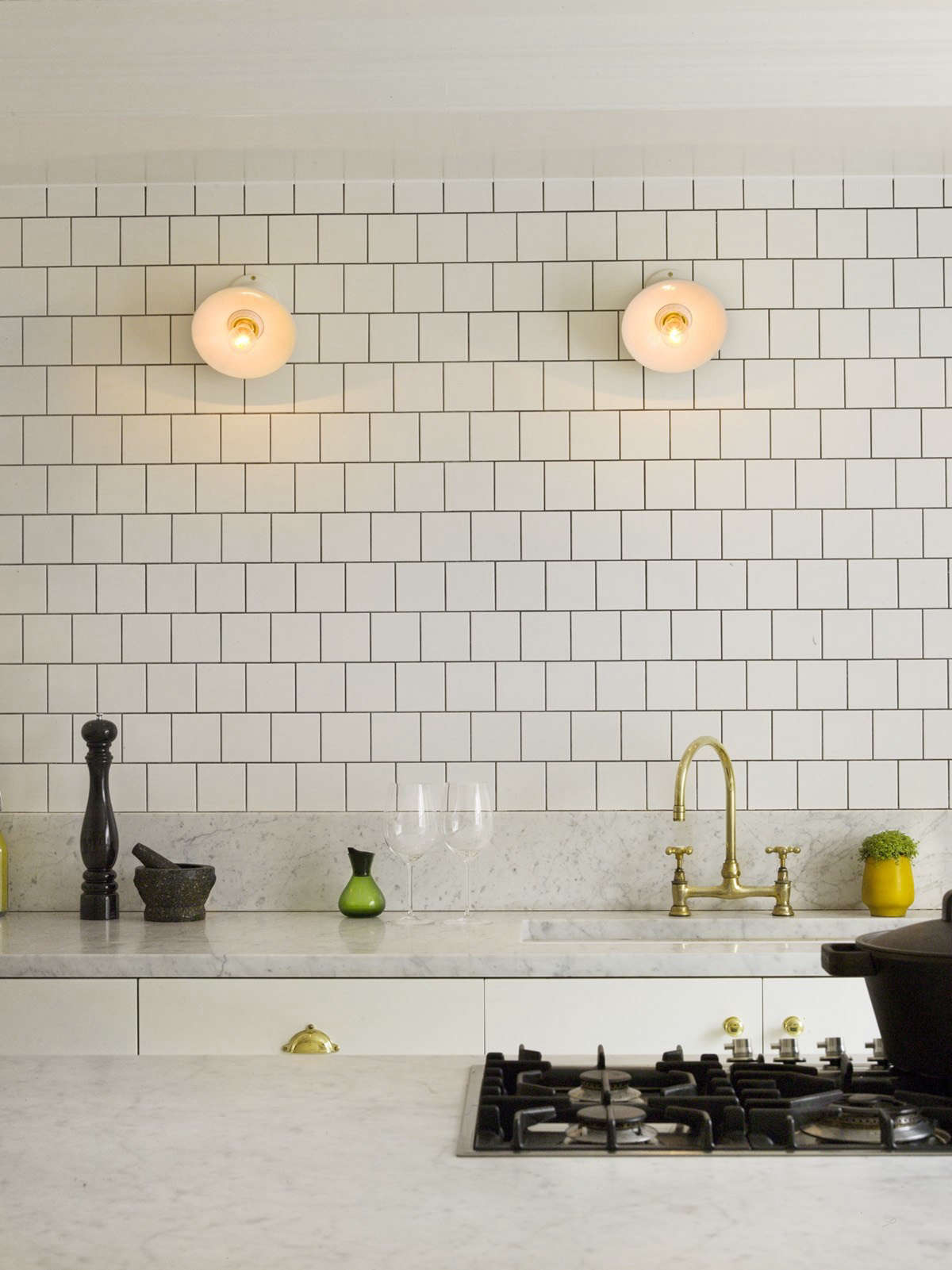
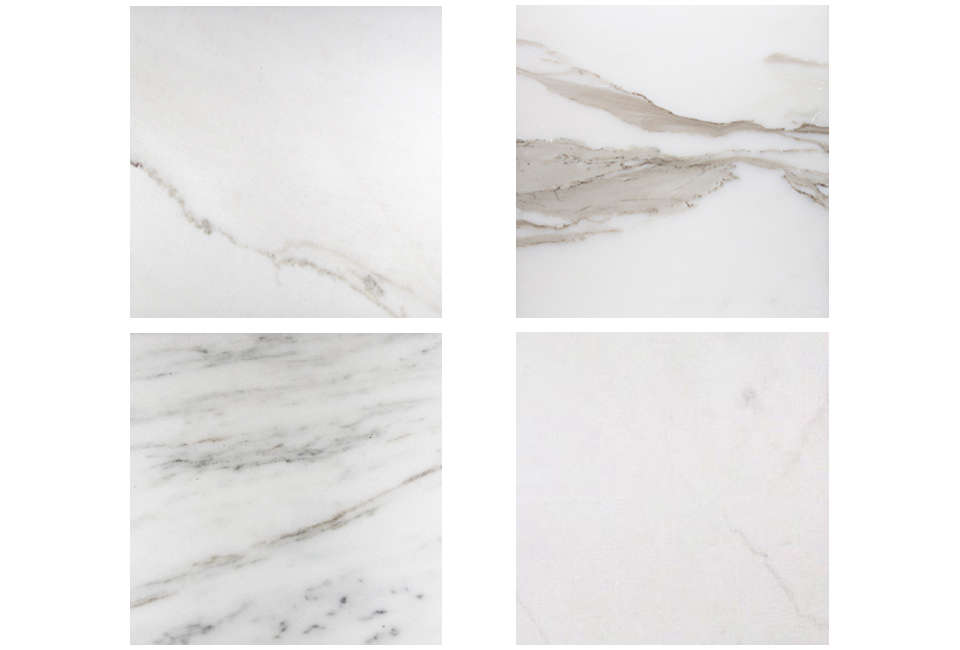
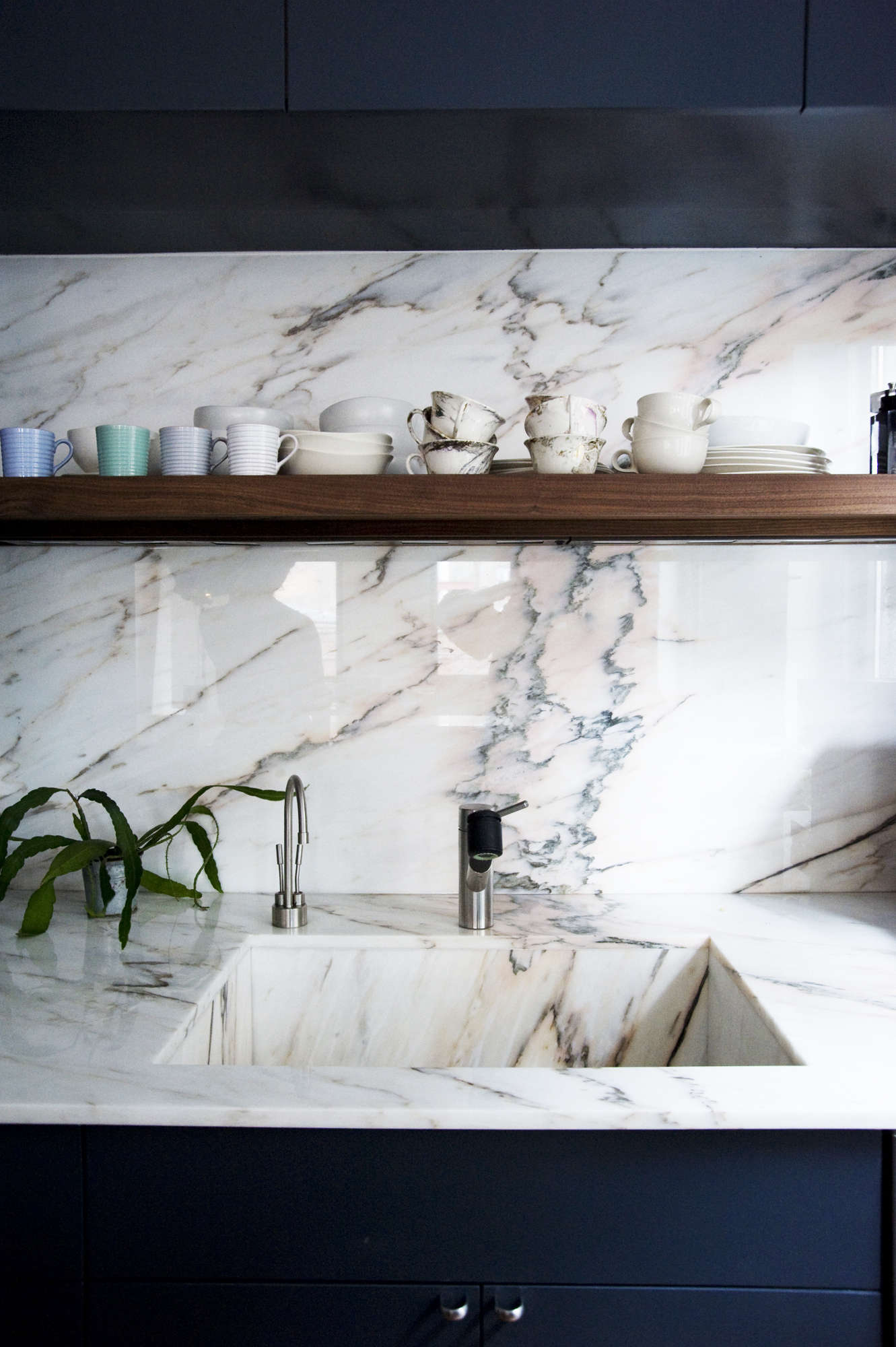

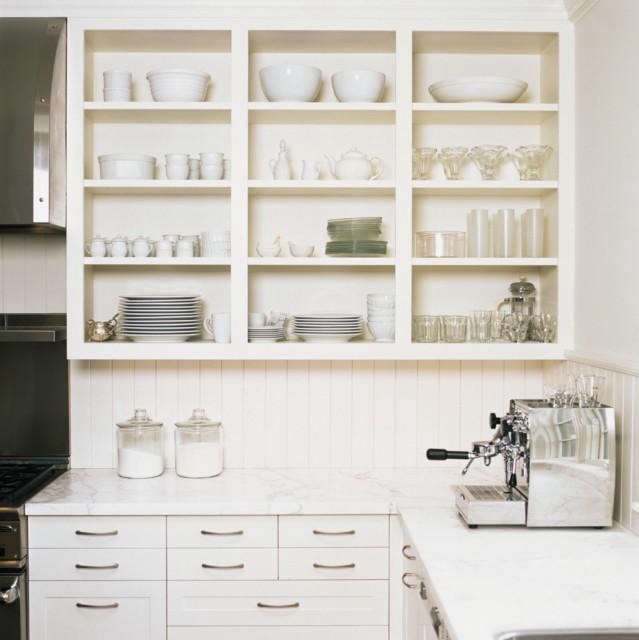

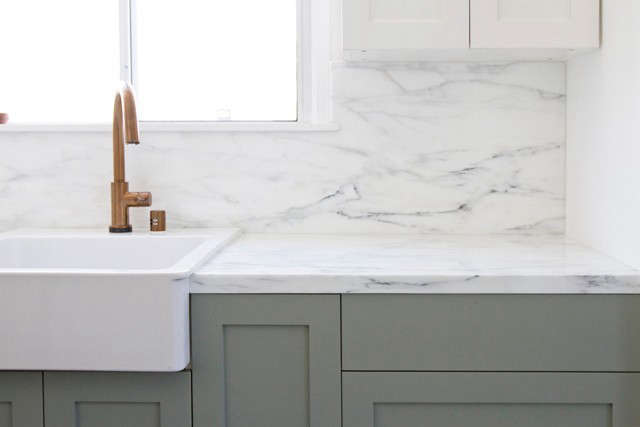




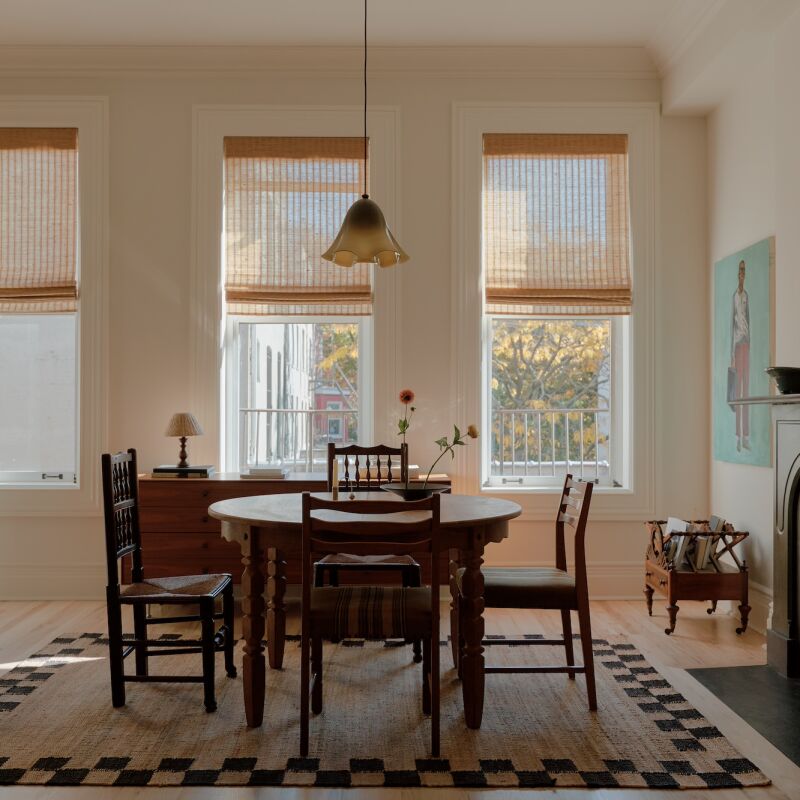

Have a Question or Comment About This Post?
Join the conversation